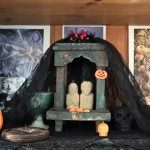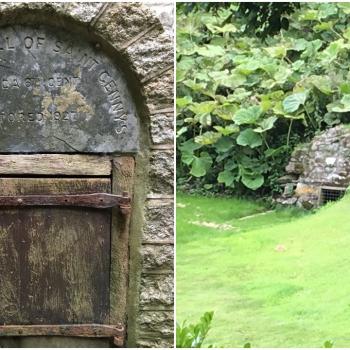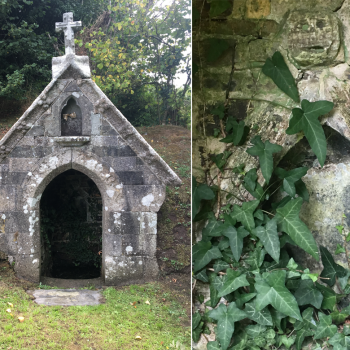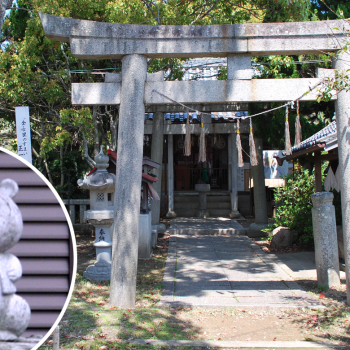In this blog, I’ve written a lot about the similarities between Neo paganismand Shinto, because I think they really do have a lot more similarities than differences. But there are differences, which can sometimes be tricky to deal with if you are practising both religions together. I thought it would be interesting to look at some of these differences.
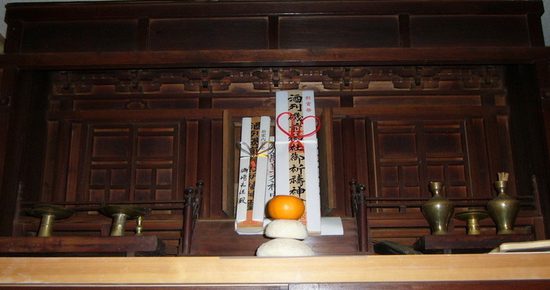
One is the concept, and treatment, of sacred objects. In Shinto, sacred objects are central to its practice. For example, every kamidana (household shrine) should feature an ofuda – a paper or wooden charm with an inscription, usually housed inside the kamidana away from view. The ofuda is always obtained from a Shinto shrine, where it is made and properly consecrated, and enables communion with the kami. Indeed one could argue that kamidana without an ofuda is possibly not a kamidana at all – it is the ofuda that makes it truly a kamidana.
One up from an ofuda is shintai, an object that actually contains the essence of a kami. It does not merely represent the kami – it physically embodies the kami. A shintai may be in the form of a natural object (a tree, waterfall, mountain etc.) or it can be created by inviting the kami spirit to “duplicate” itself from one shintai into another (a process called bunrei or wakemitama, both of which mean “splitting the soul”). One must be an ordained Shinto priest in order to preside over wakemitama.
Whether enshrined in a household kamidana or a large, public jinja shrine, shintai must be treated with great care. There are many rules governing the location and set-up of any shrine housing a shintai, which include the principle that the shintai be hidden from the eyes of common people; generally, only Shinto priests may open up the doors of the place where the shintai resides, and then only at specific times.
This concept of shintai is not really a part of most forms of Neopaganism in the West. Sacred objects do exist, but they are quite different. Like Shinto, Paganism also holds that natural objects can be sacred, and may even be thought to house a spirit among more animistic Pagans, but the creation of a sacred object in Neopaganism does not involve any kind of “divided spirit” from another sacred object, to my knowledge. Instead, Pagans (especially Wiccans) may bless or consecrate tools that they wish to use for magic or ritual purpose themselves (rather than getting some kind of priest to do it), often by instilling them with the powers of the elements that are thought to exist all around us, rather than residing in a specific object. The consecrated objects are treated respectfully, but there are no concrete rules about how exactly one should care for or display these objects. What’s more, many Pagans would say that the objects they consecrate contain some of the power of themselves, the owner of the tools, which is why it is taboo in Paganism for another person to touch a Pagan’s sacred objects without asking prior permission.
[Continues on next page]


